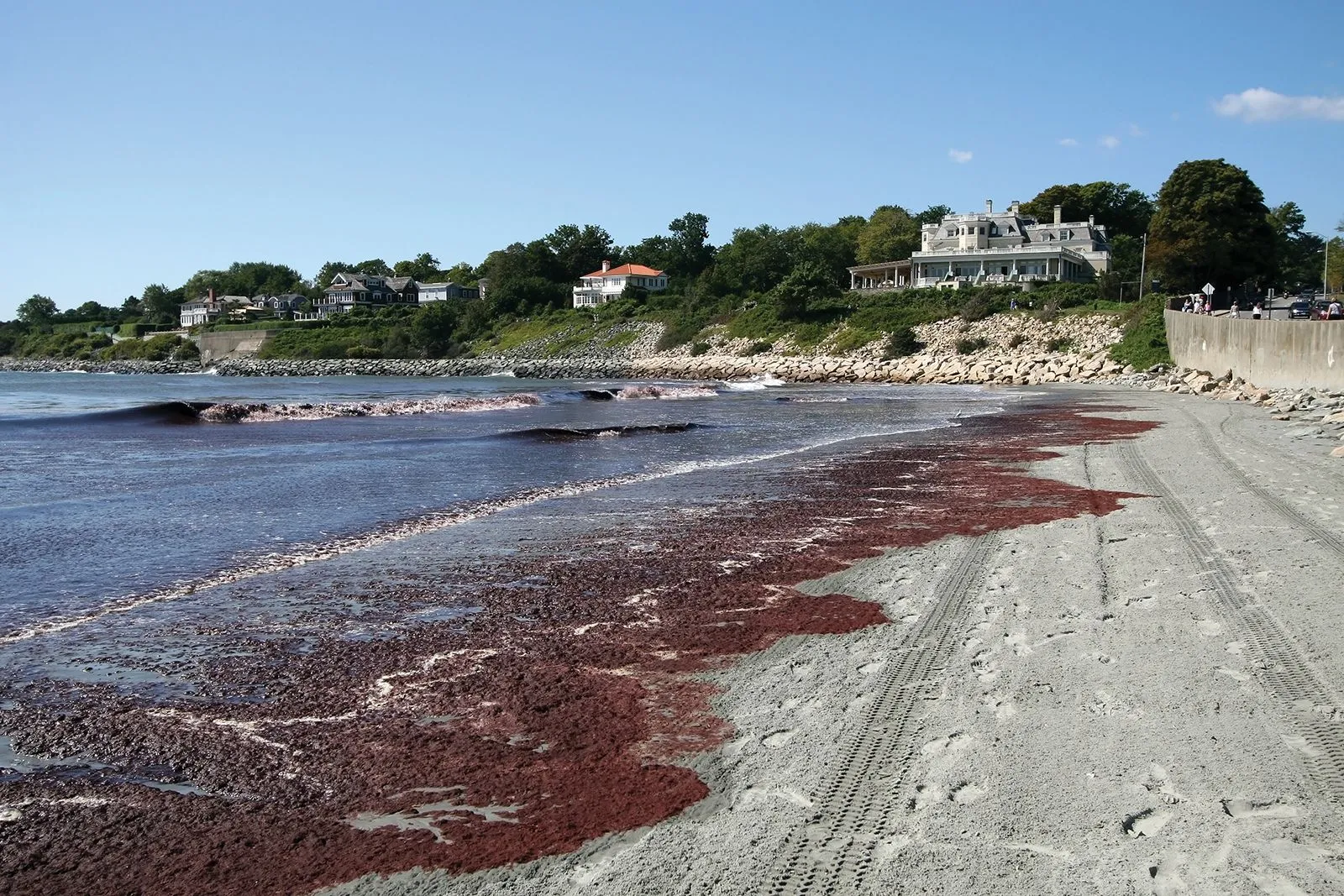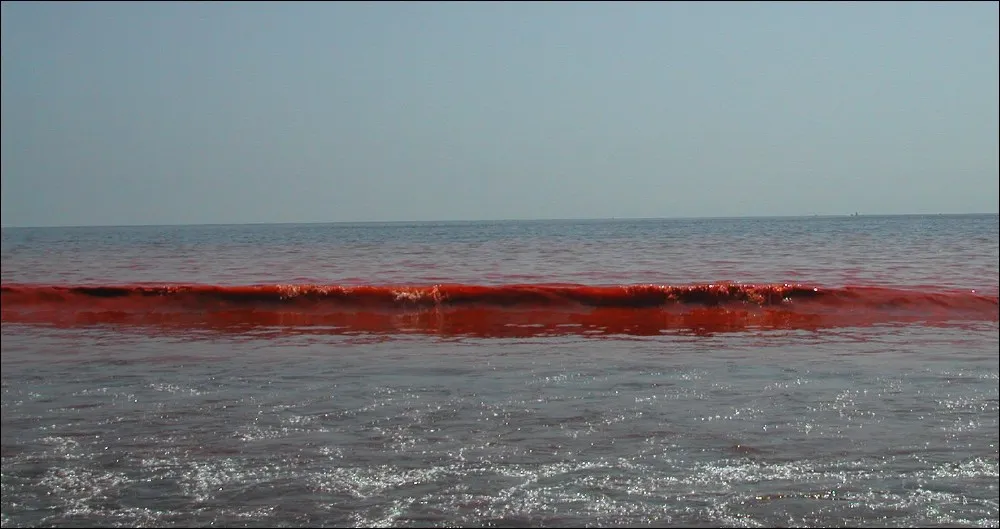What is Red Tide?
Red tide, a phenomenon that can impact Honeymoon Beach, is a harmful algal bloom (HAB) caused by the explosive growth of certain species of algae. Specifically, it’s often associated with the microscopic algae Karenia brevis. These organisms produce toxins that can be harmful to marine life and humans. The blooms can discolor the water, turning it reddish-brown, hence the name “red tide”. However, the color can vary, and the presence of red tide isn’t always visible to the naked eye. It’s a natural occurrence, but factors like nutrient pollution and climate change may contribute to its frequency and intensity.
The Science Behind Red Tides
The science behind red tides involves understanding the conditions that trigger the rapid growth of Karenia brevis and other related algae. Several factors play crucial roles. Nutrient availability, such as high levels of nitrogen and phosphorus, is often a primary driver. These nutrients can come from runoff, agricultural practices, and wastewater discharge. Sea temperature and salinity also play significant roles, as these algae thrive within specific ranges. In addition, water movement, including currents and upwelling, can concentrate the algae, leading to bloom formation. The production of brevetoxins by the algae is what causes the toxic effects.
How Red Tides Form

Red tides form through a complex interplay of environmental factors. It starts with a small population of Karenia brevis or similar algae, which might be present in the water at low levels. When conditions are right, such as optimal temperature, salinity, and nutrient levels, these algae rapidly multiply. This rapid growth is called a bloom. The bloom can then be intensified by certain weather patterns and oceanographic conditions, which might concentrate the algae in certain areas. Factors like wind and water currents can influence the bloom’s size, location, and duration. In areas like Honeymoon Beach, human activities, such as pollution, may also exacerbate the conditions promoting bloom formation.
Where Red Tides Occur
Red tides are a global phenomenon, but they are particularly prevalent in coastal areas with warm waters and high nutrient inputs. In the United States, they frequently occur along the Gulf of Mexico, including the coast of Florida, where Honeymoon Beach is located. The blooms can also occur in other regions, such as the Atlantic coast, the Pacific coast, and even in certain freshwater environments. The specific locations and frequency of blooms can vary depending on factors like climate patterns, seasonal changes, and local environmental conditions. Understanding these patterns is critical for predicting and mitigating the impacts of red tides.
Red Tide’s Impact on Honeymoon Beach
The impact of red tide on Honeymoon Beach can be substantial, affecting both the environment and human activities. The most visible effect is often discolored water, which can range from reddish-brown to other hues, or sometimes no visible color change at all. The presence of toxins in the water can lead to respiratory irritation for beachgoers, causing coughing and sneezing. Dead fish washed ashore are a common sight during a red tide bloom. The beach might become less attractive to visitors, impacting tourism and local businesses. In extreme cases, beach closures may be necessary to protect public health.
Effects on Marine Life

Red tides have devastating effects on marine ecosystems. The toxins produced by Karenia brevis can kill fish, marine mammals, sea turtles, and other animals. Fish kills are a frequent consequence, with dead fish washing ashore. Marine mammals, such as dolphins and manatees, can be affected through the consumption of contaminated fish or by direct exposure to the toxins. Shellfish can accumulate the toxins, making them unsafe for human consumption. The disruption of the food chain can have cascading effects, impacting the overall health and biodiversity of the marine environment. The long-term ecological consequences can be significant.
Impact on Human Health
Red tides pose several risks to human health. Exposure to airborne toxins released from the water can cause respiratory irritation, including coughing, sneezing, and watery eyes. People with asthma or other respiratory conditions are particularly vulnerable. Eating contaminated shellfish can lead to neurotoxic shellfish poisoning (NSP), which can cause neurological symptoms, such as tingling, numbness, and gastrointestinal issues. Skin contact with the water can also cause irritation. Following safety guidelines and heeding health advisories is essential to minimize these risks. Local authorities often issue warnings during red tide events, advising against swimming, fishing, or consuming seafood from affected areas.
Current Red Tide Status at Honeymoon Beach
To stay informed about the current red tide status at Honeymoon Beach, it’s crucial to consult reliable sources. The Florida Fish and Wildlife Conservation Commission (FWC) and local health departments are key sources of information. They monitor water conditions regularly and provide updates on the presence and intensity of red tide blooms. Check their websites or social media pages for the latest reports, which often include water sampling results, toxin levels, and any associated health advisories. Local news outlets also provide coverage of red tide events. Being proactive in checking these sources before visiting Honeymoon Beach allows you to make informed decisions and take appropriate precautions.
How to Check Red Tide Conditions

Checking red tide conditions is a simple yet important step before heading to Honeymoon Beach. Start by visiting the official websites of the FWC and local health departments. These sites usually have interactive maps and real-time data on red tide levels in different areas. Look for sections on beach conditions or water quality. Local news channels and weather reports often provide updates during red tide events. Social media can be another valuable source, as official agencies frequently post updates there. When checking, pay attention to any health advisories, beach closures, or recommendations for safe activities. Being informed helps you enjoy the beach safely.
Safety Precautions for Beach Visitors
If red tide is present at Honeymoon Beach, there are several precautions to take to minimize your risk. Avoid swimming in the water if you have respiratory issues. If you do swim, rinse off immediately after. Avoid eating shellfish harvested from the area. Keep pets away from the water and dead fish. If you experience symptoms like coughing, sneezing, or eye irritation, move away from the beach. Stay informed about local advisories, and follow any recommendations from health officials. Consider wearing a face covering to reduce the inhalation of airborne toxins. Staying aware and prepared allows for a safer beach experience.
What to Do if You Encounter Red Tide
If you encounter red tide at Honeymoon Beach, it is important to take immediate action to protect yourself. First, move away from the affected area to minimize exposure to airborne toxins. If you experience any symptoms like coughing, sneezing, or eye irritation, seek medical attention, especially if symptoms persist or worsen. Avoid swimming or any water activities. Do not harvest or consume any shellfish from the area. Report any dead fish or marine animal sightings to the local authorities. Stay informed by monitoring official updates from health agencies and following any recommended guidelines. Your safety is the priority.
Long-term Effects and Future Predictions

The long-term effects of red tide blooms on Honeymoon Beach and the surrounding ecosystem can be significant. Repeated exposure to toxins can lead to a decline in marine biodiversity and affect the health of coral reefs and seagrass beds. Changes in nutrient levels and climate change might contribute to increased frequency and intensity of blooms in the future. Scientists are researching these effects, trying to understand the complex relationships between environmental factors and red tide formation. Predicting future trends requires a deeper comprehension of these factors and requires continued monitoring and research efforts to predict and mitigate the impact of red tides.
Research and Monitoring Efforts
Significant research and monitoring efforts are underway to understand red tides and develop effective mitigation strategies. Scientists study the factors that trigger and sustain blooms, including nutrient dynamics, water currents, and climate change. Monitoring programs use water sampling, satellite imagery, and other technologies to track the presence and spread of red tides. Research focuses on developing methods to reduce the impact of red tides, such as nutrient management and toxin-neutralizing strategies. Collaboration between government agencies, research institutions, and universities is crucial for advancing knowledge and protecting coastal environments like Honeymoon Beach.
How to Support Healthy Beaches
Supporting healthy beaches, including Honeymoon Beach, involves individual and community efforts. Reduce your environmental footprint to minimize pollution, properly dispose of waste, and conserve water. Support local organizations working to protect coastal ecosystems. Participate in beach cleanups and advocate for sustainable practices. Educate others about the impacts of red tide and the importance of protecting our beaches. By working together, we can help create a healthier and more resilient environment for everyone to enjoy. Reducing nutrient runoff and pollution can also reduce the frequency and impact of red tides.
Conclusion

Red tide poses a significant environmental and health challenge, especially in areas like Honeymoon Beach. Understanding the causes, impacts, and safety precautions associated with red tide is essential for protecting both the environment and human health. By staying informed, following safety guidelines, and supporting conservation efforts, we can all play a part in mitigating the effects of red tide and ensuring the long-term health and beauty of Honeymoon Beach for generations to come. Continued research and vigilance are crucial for managing this natural phenomenon and protecting our coastal treasures.
